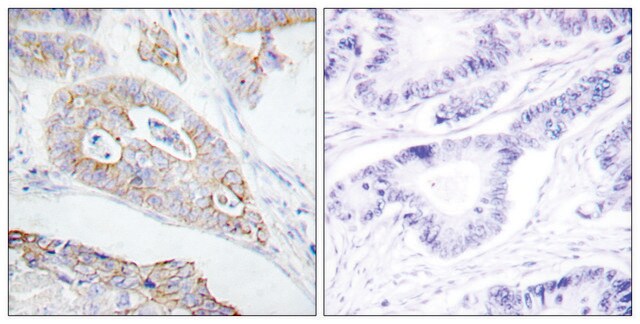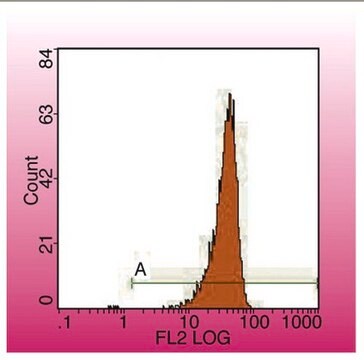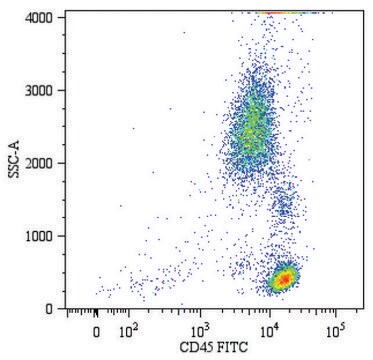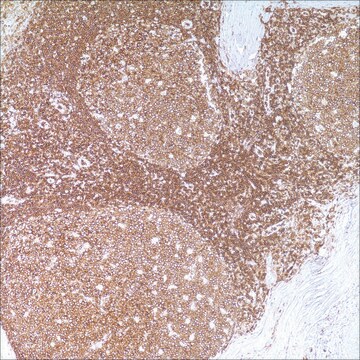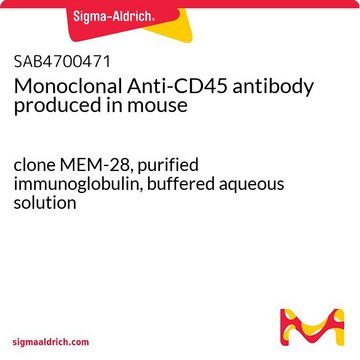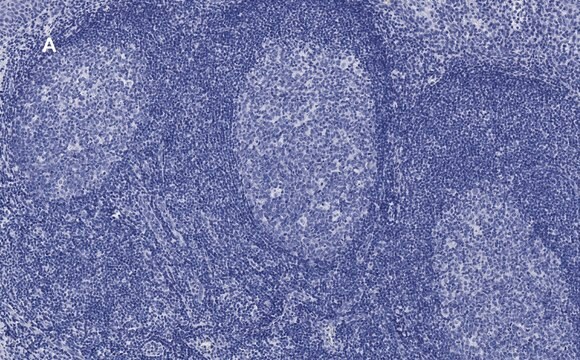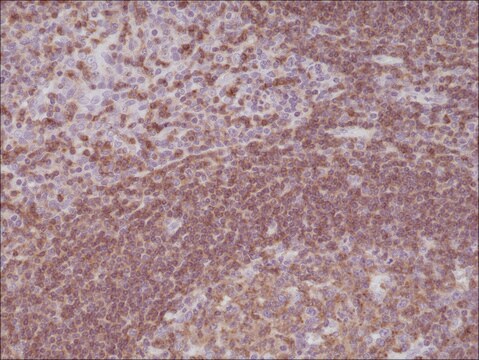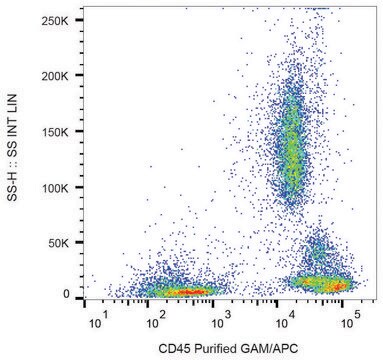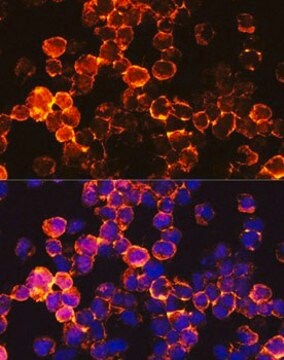05-1410-M
Anti-CD45 Antibody, clone F10-89-4
clone F10-89-4, from mouse, purified by affinity chromatography
Synonym(s):
CD45 antigen, Leukocyte common antigen precursor, SCID due to PTPRC deficiency, T200 glycoprotein, T200 leukocyte common antigen, Human homolog of severe combined immunodeficiency due to PTPRC deficiency, Leukocyte-common antigen, Protein tyrosine phosph
About This Item
IF
IHC
IP
WB
immunofluorescence: suitable
immunohistochemistry: suitable (paraffin)
immunoprecipitation (IP): suitable
western blot: suitable
Recommended Products
biological source
mouse
Quality Level
antibody form
affinity isolated antibody
antibody product type
primary antibodies
clone
F10-89-4, monoclonal
purified by
affinity chromatography
species reactivity
mouse
species reactivity (predicted by homology)
human, rat
technique(s)
flow cytometry: suitable
immunofluorescence: suitable
immunohistochemistry: suitable (paraffin)
immunoprecipitation (IP): suitable
western blot: suitable
isotype
IgG2a
NCBI accession no.
UniProt accession no.
target post-translational modification
unmodified
Gene Information
human ... PTPRC(5788)
General description
Specificity
The LCA comprises of at least 5 isoforms ranging from 180-220 kDa which are produced as a result of alternative splicing of exons A, B or C. CBL 124 recognizes epitopes common to
all of the isoforms.
Antigen distribution:
Thymocytes >95%
Granulocytes >95%
Monocytes >95%
B cells (CD20+) >95%
T cells (CD3+) >95%
NK cells (CD16+) >95%
Peripheral blood lymphocytes >95%
FUSION PARTNER: NS1 myeloma cell line
Immunogen
Application
Immunohistochemistry (paraffin): A previous lot of this antibody was used in the discrimination between malignant cells of haematopoietic origin and other malignancies in frozen tissue sections.
Immunoprecipitation: A previous lot of this antibody was used in studies of the leucocyte common antigen complex and its identification by the Western blotting technique.
Flow Cytometry: Studies of CD45 expression and the association with T-cell receptor signaling was performed using this antibody of previous lot.
Studies of the mechanism by which CD45 regulates B cell activation through protein tyrosine phospatases.
Optimal working dilutions must be determined by the end user.
Immunohistochemistry(paraffin): Representative testing from a previous lot.
Optimal Staining of CD45 Monoclonal Antibody: Tonsil
Signaling
Immunological Signaling
Quality
Western Blot Analysis: 1:500 dilution of this lot detected CD45 on 10 μg of Jurkat lysates
Target description
Linkage
Physical form
We recommend that each laboratory determine an optimum working titre for use in its particular application.
Storage and Stability
Handling Recommendations: Upon first thaw, and prior to removing the cap, centrifuge the vial and gently mix the solution. Aliquot into microcentrifuge tubes and store at -20°C. Avoid repeated freeze/thaw cycles, which may damage IgG and affect product performance.
Analysis Note
Jurkat cell lysate
Other Notes
Disclaimer
Not finding the right product?
Try our Product Selector Tool.
Storage Class Code
12 - Non Combustible Liquids
WGK
WGK 2
Flash Point(F)
Not applicable
Flash Point(C)
Not applicable
Certificates of Analysis (COA)
Search for Certificates of Analysis (COA) by entering the products Lot/Batch Number. Lot and Batch Numbers can be found on a product’s label following the words ‘Lot’ or ‘Batch’.
Already Own This Product?
Find documentation for the products that you have recently purchased in the Document Library.
Our team of scientists has experience in all areas of research including Life Science, Material Science, Chemical Synthesis, Chromatography, Analytical and many others.
Contact Technical Service